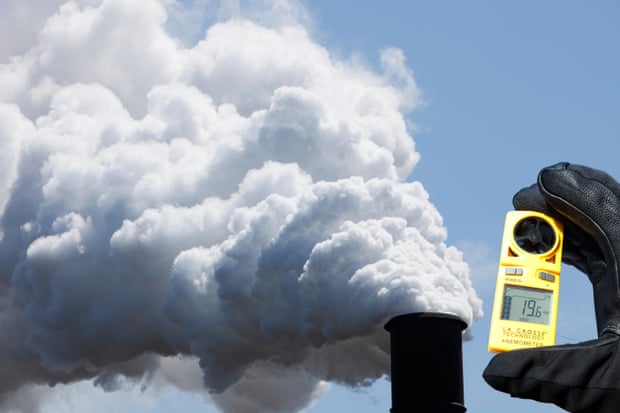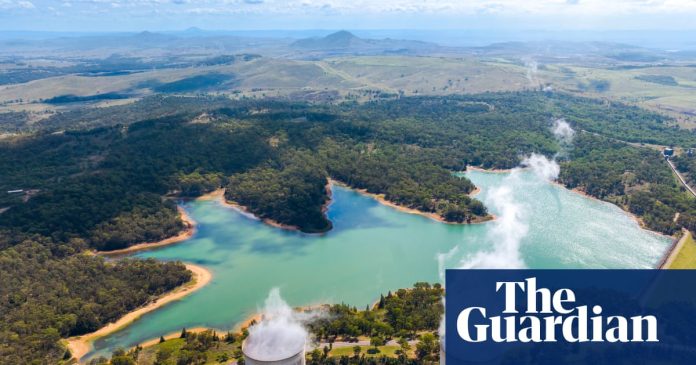Business and energy industry leaders have warned the Coalition that abandoning a net zero emissions target will not cut power bills, undermining the core promise of Sussan Ley’s signature new policy.
The chief executive of the Australian Chamber of Commerce and Industry (ACCI), Andrew McKellar, dismissed the policy as a “bit of a plan not to have a plan”, as the Coalition’s traditional business allies distanced themselves from it.
The opposition leader spent Monday selling the strategy, which includes abandoning any net zero target, dismantling the government’s climate policies, pumping more gas into the market and extending the life of coal-fired power stations.
In one aspect that has angered moderate Liberals, a future Coalition government would allow the capacity investment scheme – currently restricted to renewables and storage – to use taxpayer funds to underwrite coal-fired power.
Sign up: AU Breaking News email
On Monday Ley promised the “technology neutral” approach would bring down power prices, repeating her claim that Labor’s policies were to blame for higher energy bills.
“Power prices will come down under us, because downward pressure will be put on power prices,” she told 2GB.
“Now, I know people are going to ask me how much, but from where they will be when we get into government, if we’re fortunate enough to be elected, you will see downward pressure from that point on.”
Q&A
What is net zero emissions?
Show

Net zero emissions is a target that has been adopted by governments, companies and other organisations to eliminate their contribution to the climate crisis. It is sometimes called “carbon neutrality”.
The climate crisis is caused by carbon dioxide and other greenhouse gases being pumped into the atmosphere, where they trap heat. They have already caused a significant increase in average global temperatures above pre-industrial levels recorded since the mid-20th century.
Countries and others that set net zero emissions targets are pledging to stop their role in worsening this by cutting their climate pollution and balancing out whatever emissions remain by sucking an equivalent amount of CO2 out of the atmosphere.
This could happen through nature projects – tree planting, for example – or using carbon dioxide removal technology.
CO2 removal from the atmosphere is the “net” part in net zero. Scientists say some emissions will be hard to stop and will need to be offset. But they also say net zero targets will be effective only if carbon removal is limited to offset “hard to abate” emissions. Fossil use will still need to be dramatically reduced.
After signing the 2015 Paris agreement, the global community asked the Intergovernmental Panel on Climate Change (IPCC) to assess what would be necessary to give the world a chance of limiting global heating to 1.5C.
The IPCC found it would require deep cuts in global CO2 emissions: to about 45% below 2010 levels by 2030, and to net zero by about 2050.
The Climate Action Tracker has found more than 145 countries have set or are considering setting net zero emissions targets.
The chief executive of the Clean Energy Council, Jackie Trad, said abandoning a net zero emissions target “won’t cut power bills or improve energy security”.
“It simply undermines Australia as a stable investment environment and frustrates the credible plan to replace the coal units that are already shutting down,” said Trad, a former Queensland state Labor minister.
“Without that replacement, households, businesses and critical industries will face higher prices, more frequent outages and growing system instability.”
On Monday, the Australian Energy Council released the findings of a survey of chief executives from leading energy retailers, generators and investors, which reaffirmed their support for net zero on the premise that the “least cost, lowest impact pathway is an energy system dominated by renewables and firmed by battery storage, gas and pumped hydro”.
The council’s chief executive, Louisa Kinnear, said renewable energy with “firming” support would ultimately be cheaper than investing in existing or new coal-fired power, but the transition needed to be carefully managed.
after newsletter promotion
McKellar, from ACCI, highlighted several issues with the opposition’s plan, including the apparent contradiction with its position on the 2015 Paris agreement.
The Coalition insists it supports the Paris agreement, but its promise to tear up climate targets would be in breach of Australia’s obligations under the pact.
“To characterise it at the moment, it seems to be a bit of a plan not to have a plan, unfortunately,” McKellar told the ABC. “So I think a lot more detail is required.”
The Australian Industry Group chief executive, Innes Willox, told the ABC’s RN Breakfast his organisation needed “a lot more detail”.
“From conversations with a range of people over the past week, it seems that they’re opening their way back up to more coal into the system,” he said. “If you were to go down that path, they take a long time to develop and there’s been no investor appetite for new coal-fired powered stations now for a very long time because of the trajectory that we’re on, and the pure economics of it.”
He said industry had “by and large signed up to” net zero by 2050.
The Minerals Council of Australia’s chief executive, Tania Constable, said the mining industry had “an ambition” to achieve net zero emissions by 2050, but that it was a “huge challenge” and “all technologies should be on the table”.







